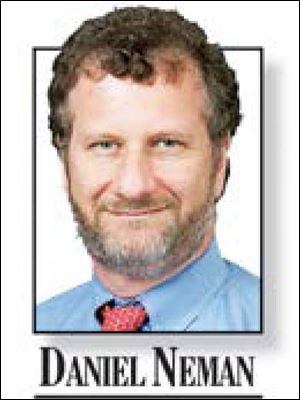
MORSELS
8-course meal will be a class act
11/2/2013
Should you be worrying about the future of the youth of America, you can officially stop now. The youth of America are going to be just fine.
We say this because on Nov. 21, the high school students in the Culinary Arts program at the Penta Career Center will be presenting an eight-course meal to raise money for the center's Culinary Arts Scholarship.
In case the salient fact slipped by, I will repeat it: These are high school students. And they are cooking an ambitious eight-course meal, with each course representing food from a different country.
The appetizers are from Spain, featuring fried paella, queso blanco with fig compote, golden gazpacho, and eggplant and chorizo rollatini, served with glasses of what we can only assume are non-alcoholic red and sparkling white sangrias. The first course, inspired by the foods of South Korea, will be a steamed pork-belly bun, with sticky barbecue sauce, kim chee purée, and pickled vegetables.
The second course, branzino and olive oil confit, comes from Greece and is served with a sunchoke pine nut purée, crispy olives, and capers. China is the source of the third course, crispy tofu with ginger iced tea, with a cilantro soy glaze, broccoli, and rice. The fourth course represents the good ole U.S. of A, with a lobster macaroni and cheese, made with triple cream brie, asiago cheese, and cranberry compote.
We did mention that these are high school students, right?
The meal continues with a fifth course from the United Kingdom, for some reason: a duo of shepherd's pie and bangers and mash (sausages and mashed potatoes). The cheese course will be Italian, featuring gorgonzola, smoked mozzarella, and Parmesan gelato. Dessert will follow from Mexico, churros (essentially a Mexican doughnut) with hot chocolate.
And assuming that no one will have any room left for the final course, it is meant to be taken home: assorted Belgian chocolates and sweets.
The appetizers will be served beginning at 6 p.m., with dinner at 6:30 p.m., and a silent auction beginning at 5:30 p.m. Tickets are $75, and the dinner often sells out. Reservations are required by Thursday at 419-661-6486 or at ewray@pentacc.org.
Penta is located at 9301 Buck Rd. It is a public school, so alcohol will not be served.
Corn syrup vs. sugar
The bandwagon is full of them: people — mostly those who pay attention to the potential health hazards of modern foods — who are on a crusade against high-fructose corn syrup.
High-fructose corn syrup, or HFCS, is more than abundant these days. Because it is cheaper to produce than sugar, it is in everything from cereal to crackers to ketchup to salad dressings, and it is especially prevalent in soft drinks. About the same time that HFCS began to be put in everything, obesity rates started to soar. Many scientists and doctors said there had to be a correlation, that it is the HFCS that is making us fat.
But according to a recent release from Ohio State University's College of Food, Agricultural, and Environmental Sciences, a number of other scientists and doctors now say that HFCS is not the culprit. They see little scientific difference between it and ordinary table sugar.
Table sugar, and the sugar that is found naturally in fruits and vegetables, is made up of approximately equal parts of fructose and glucose. High fructose corn syrup is also a mixture of the two, of varying proportions. The HFCS typically used in baked goods, for instance, usually works out to 42 percent fructose. The HFCS used in soft drinks is around 55 percent fructose.
Pure corn syrup, incidentally, is almost entirely glucose.
Last year, the Academy of Nutrition and Dietetics examined all of the studies into the effects of HFCS that had been conducted in the previous decade, and came to the conclusion that they could not come to a conclusion. The studies seemed to indicate that HFCS is not any worse for causing obesity and other health effects than sugar is. On the other hand, the academy also noted that the studies were too small and of too short a duration to come to any definitive answer.
So if HFCS may be worse for you than sugar or it may not, what are we to do? The OSU release suggests eating less of both. It says that the average American consumes 350 calories of what it calls "added sugars" every day. Those are the sugars you find in candy, soft drinks, pastries, cookies, ice cream, and the like. That's not even counting the sugars found naturally in, say, milk or fruit.
If you would like to lose weight, saving some of those 350 calories a day is a great place to start.
Thanksgiving restaurants
Calling all restaurants! Or, more to the point, calling all restaurants that will be open on Thanksgiving Day!
America's favorite food-related holiday is often thought of as a time to be with food and family at home. But a lot of people, perhaps more than you know, prefer to go out for their Thanksgiving meal or, for one reason or another, have to eat out on Thanksgiving. Those folks, looking for a place to eat when so many restaurants are closed, often do not know where they can go.
That is where we can come in. If you are a restaurateur who will be open on Thanksgiving, let us know and we will print a list of those places in this space in a few weeks. Send your information and the hours you will be open to food@theblade.com or call 419-724-6155.
It's just one of the many services we provide to ensure that everyone has a happy and well-fed holiday.